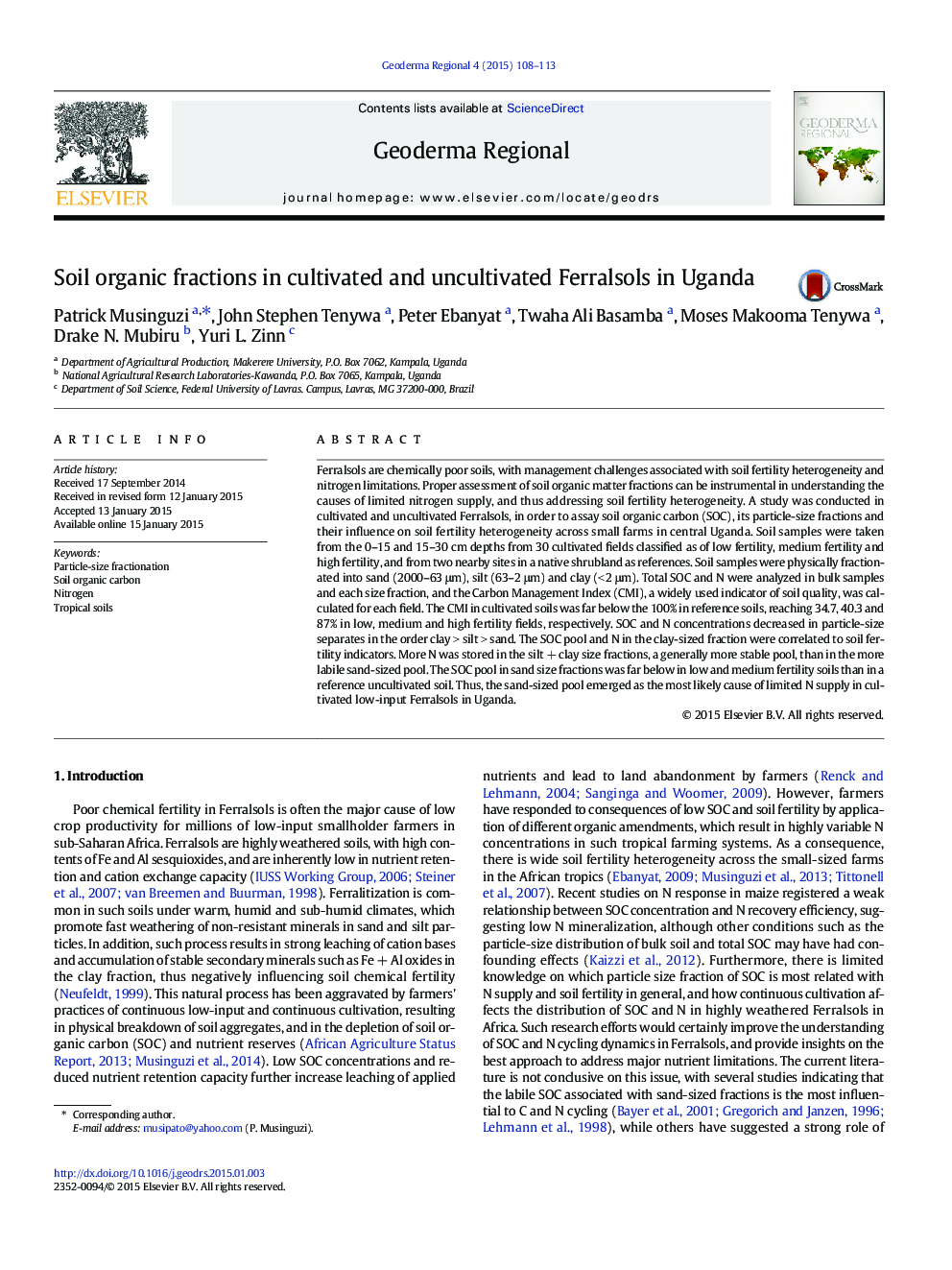| Article ID | Journal | Published Year | Pages | File Type |
|---|---|---|---|---|
| 4480796 | Geoderma Regional | 2015 | 6 Pages |
•30 cultivated soils with variable fertility were compared with 2 uncultivated soils.•Cultivated Ferralsols are significantly depleted of active C fractions.•Nitrogen is tied in clay-sized fraction in both cultivated and uncultivated soils.•Carbon in clay-sized fraction significantly influence variable soil fertility.•Carbon distribution decrease in the order of clay-size > silt-size > sand-sizes.
Ferralsols are chemically poor soils, with management challenges associated with soil fertility heterogeneity and nitrogen limitations. Proper assessment of soil organic matter fractions can be instrumental in understanding the causes of limited nitrogen supply, and thus addressing soil fertility heterogeneity. A study was conducted in cultivated and uncultivated Ferralsols, in order to assay soil organic carbon (SOC), its particle-size fractions and their influence on soil fertility heterogeneity across small farms in central Uganda. Soil samples were taken from the 0–15 and 15–30 cm depths from 30 cultivated fields classified as of low fertility, medium fertility and high fertility, and from two nearby sites in a native shrubland as references. Soil samples were physically fractionated into sand (2000–63 μm), silt (63–2 μm) and clay (< 2 μm). Total SOC and N were analyzed in bulk samples and each size fraction, and the Carbon Management Index (CMI), a widely used indicator of soil quality, was calculated for each field. The CMI in cultivated soils was far below the 100% in reference soils, reaching 34.7, 40.3 and 87% in low, medium and high fertility fields, respectively. SOC and N concentrations decreased in particle-size separates in the order clay > silt > sand. The SOC pool and N in the clay-sized fraction were correlated to soil fertility indicators. More N was stored in the silt + clay size fractions, a generally more stable pool, than in the more labile sand-sized pool. The SOC pool in sand size fractions was far below in low and medium fertility soils than in a reference uncultivated soil. Thus, the sand-sized pool emerged as the most likely cause of limited N supply in cultivated low-input Ferralsols in Uganda.
